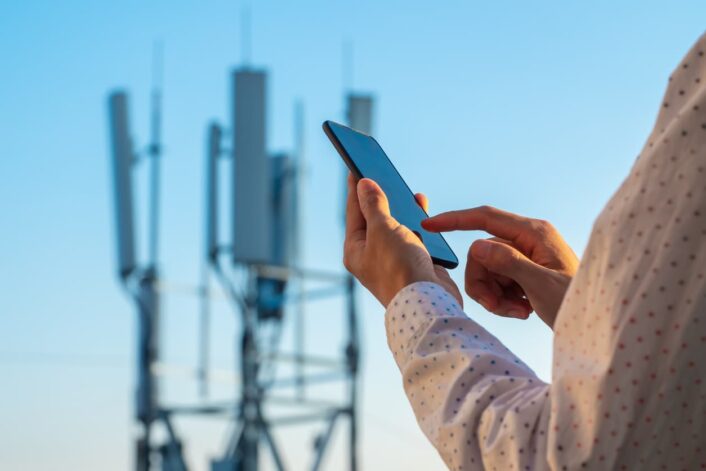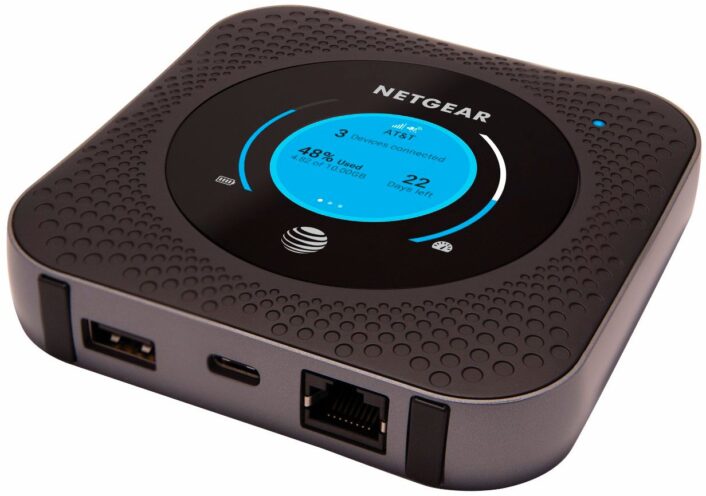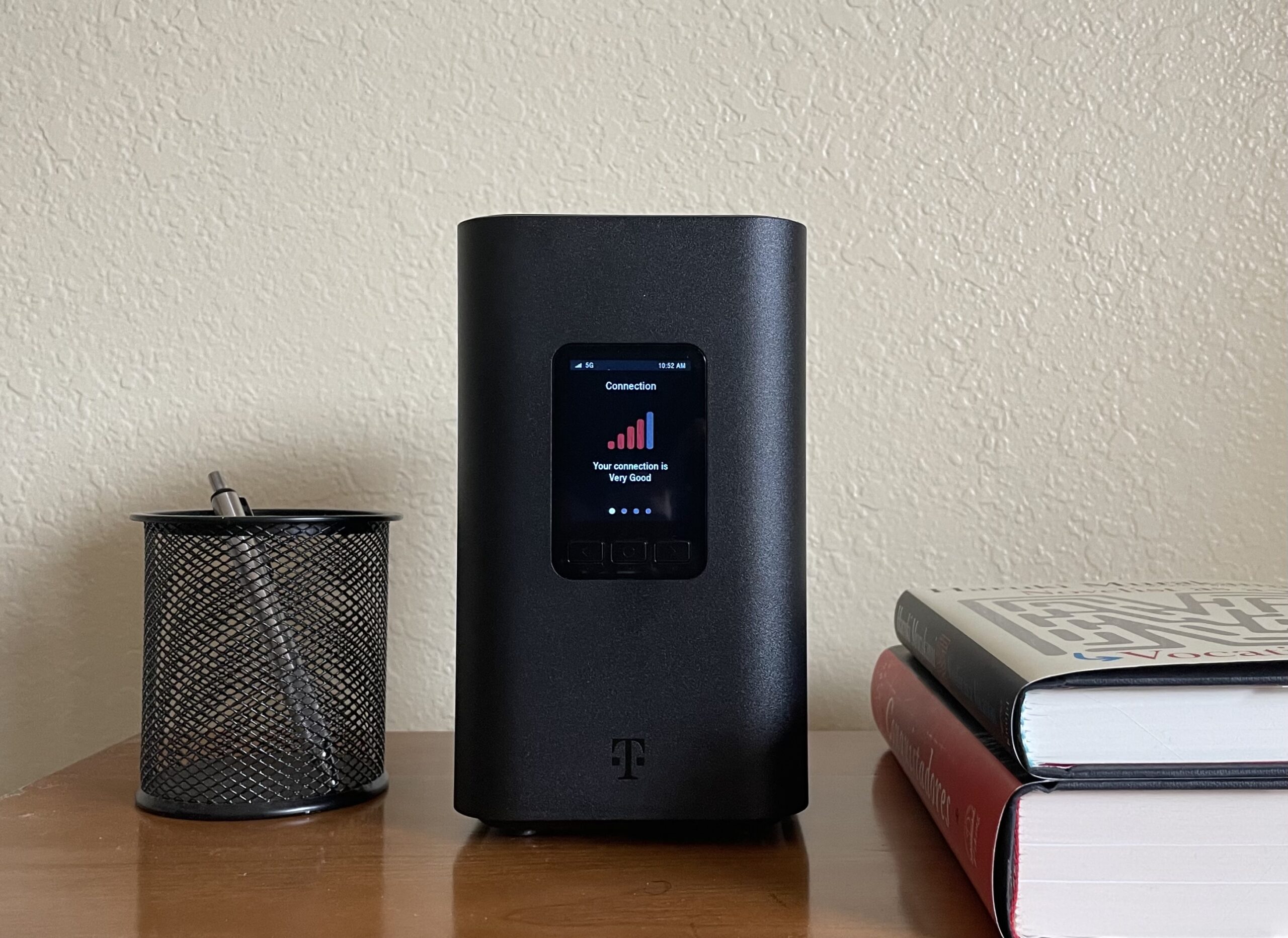Mobile Hotspot vs. Phone Tethering: What’s the Difference?
May 29, 2025 | Share
Technology
Phone tethering is the act of connecting devices to the internet using a smartphone and its internet connection, while a hotspot is the device used to connect. You can tether using Bluetooth, Wi-Fi, or a USB cable, and you can either use your smartphone as a personal hotspot or use a separate mobile hotspot device.
Either way, you use mobile data from a cell phone provider to set up portable Wi-Fi as a hotspot. So how are these methods different, exactly? And which option is better for your needs?
Read on for a full explanation.
Tethering explained—a hotspot on your smartphone

Phone tethering means making a connection (or “tether”) from your phone to a separate internet-capable device, like a laptop or table. In doing so, you use mobile data to set up an internet connection for the laptop.
You can tether devices using Bluetooth, a USB cable, or a Wi-Fi signal.
Phone tethering is a simple, secure, and cost-effective way to connect to the internet when you’re out and about. As long as your phone plan comes with hotspot data, you can switch on your phone’s hotspot and use it for Wi-Fi anywhere you get cell service.
Most phones nowadays have built-in hotspots that allow for phone tethering, and many phone plans come with hotspot data you can use expressly for this purpose. If your cellular carrier doesn’t automatically give you hotspot data, you can usually add it to your plan for an affordable price.
Pro tip: Here’s how to turn on your hotspot
Not sure how to set up your phone’s hotspot? Take a look at our phone hotspot guide to find out.
Phone tethering pros and cons
Phone tethering is easy and fast, but it has limits. You can only connect a certain number of devices at once, for instance, and the personal hotspot drains your phone’s battery when you use it for an extended period.
That said, you can now get premium mobile phone plans with huge buckets of high-speed hotspot data. Many of the best smartphone plans now offer more hotspot data per month than you could get with a data-only plan for a standalone hotspot device.
 Pros:
Pros:
- Easy setup
- Affordable data
- Accessibility anywhere with cell service
 Cons:
Cons:
- Limits on connected devices
- Strict data caps on non-premium plans
Need fast internet?
Run a search with your zip code to see what’s available in your area.
Mobile hotspot devices explained—standalone equipment with added features

A mobile hotspot is a standalone device that works the same as a phone’s hotspot, letting you set up a Wi-Fi connection for laptops, tablets, and other devices using cellular data.
However, a mobile hotspot can do a lot more than your personal smartphone hotspot. Some come with security features like firewalls and guest networks, for instance, and most have up-to-date Wi-Fi standards that make it easier to connect a large number of devices at the same time. Better yet, hotspots usually have better radios (to receive cellular signal) and better antennas than smartphones, and that means better connectivity and faster speeds throughout the day.
Using a mobile hotspot is just as straightforward as using your phone, but it comes with added expenses. On top of buying the actual hotspot device, you also have to invest in a hotspot data plan from a cellular carrier. But the extra investment nets you more data, greater flexibility, and an extra backup option when you need portable Wi-Fi while traveling.
Pro tip: Get the best hotspot for your needs
If you’re on the market for a mobile hotspot, take a look at our best hotspots guide to learn more about prices and specs. You can get a top-of-the-line 5G hotspot for under $300 or a budget-friendly 4G hotspot for a lot less.
Mobile hotspot pros and cons
A mobile hotspot is a significant upgrade from your phone’s hotspot, but not everyone needs one. Aim to get a mobile hotspot if you spend a significant amount of time away from the home or office and need a reliable way to get Wi-Fi when fixed broadband isn’t available. Hotspots are also ideal for school groups and teams of employees on work trips.
If you don’t have heavy-duty hotspot needs, you’re probably just fine using phone tethering.
 Pros:
Pros:
- Connectivity for 32 or more devices, depending on hotspot
- Consistent performance with Wi-Fi 6 on 5G devices
- Affordable rates for data plans
 Cons:
Cons:
- Added expense for the device and data plan
- No plans available with unlimited high-speed hotspot data
- Location-dependent speed and quality
What’s better for you: Phone tethering or a mobile hotspot?
Stick to phone tethering if you only need portable Wi-Fi for only one person. Your phone’s personal hotspot doesn’t have a whole lot of firepower or features, but it’s cheap and easy to use.
You’re better off upgrading to a mobile hotspot if you regularly share your hotspot with a group of friends, classmates, or coworkers.
| Device type | Best for |
|---|---|
| Phone tethering |
|
| Mobile hotspot |
|
Author - Peter Holslin
Peter Holslin has more than a decade of experience working as a writer and freelance journalist. He graduated with a BA in liberal arts and journalism from New York City’s The New School University in 2008 and went on to contribute to publications like Rolling Stone, VICE, BuzzFeed, and countless others. At HighSpeedInternet.com, he focuses on covering 5G, nerding out about frequency bands and virtual RAN, and producing reviews on emerging services like 5G home internet. He also writes about internet providers and packages, hotspots, VPNs, and Wi-Fi troubleshooting.






